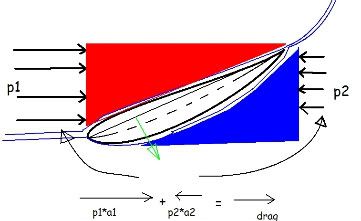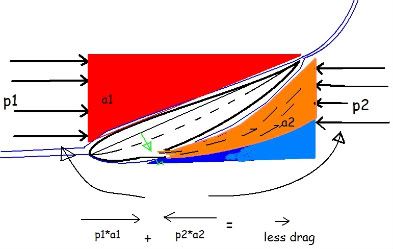The wing difuser relationship is complicated, but the diffuser will still create downforce without the wing, just not as much. Removed wing is more related to the back of the car lifting and upseting the aerodynamic balance, taking away upwash from the diffuser, and also increasing rideheight which affects the diffuser again.Raptor22 wrote:SLC wrote:It is definitely a stalling mechanism. Yes, this will decrease the effectiveness of the diffuser but at 300kph down a straight you don't really care about the absolute downforce level you are producing - as long as you can shed 10-15 pts of Cd.
And yes, it is driver operated. Somehow.
You're free to believe this, just like some people believe in the 2nd coming.
However, you have to appreciate that the rear wing and diffusor work in conjunction with each other.
Higher efficiency of the rear wing increase the scavenging of the diffusor which increase downforce.
remove the rear wing and the diffusor alone does not keep the car on the ground nor does it maintain stability. If it did then when a rear wing falls off, the car would go faster and still be stable. However we see in reality that when a rear wing falls off, the car looses stability.
Not really, remember the object will still be there creating massive amounts of drag.If you stall the rear wing, its the same effect as removing the wing.
So it is a lose-lose situation. Not the same as no wing at all.
No, infact it may require no power at all. If you shoot a hole through a plane wing the pressure will equalize and the plane will drop out of the air. No power required!Maintaining equal pressure on both upper and lower surfaces of the wing is not possible unless you can blow a very large VOLUME of air into the wake behind the wing. You cannot achieve that without a large pump pumping slowly. So the only way to stall the wing is too use the engine as a pump, robbing power.
True, but SLC is not reffering to flap blowing.The purpose of the flap blowing has nothing to do with stall. get over it, its science fiction.
It's also about relative speed control.Flap blowing is about wing efficiency through boundary layer control.
Moving on now, to not stalling the wing.i know we love to get the creative juices flowing so lets talk about magnetic levitation for the MP4/25 or how about turning it into a hover craft down the straight with all the stalled air in the now choked (if you believe in wing stall) diffusor. Lets discuss some stability control mechanisms to make this work.
Stalled wings is nonsense, can we move on...
Just for simplicity, this is not exactly what is happening, but is a basic representation for clarity.

The longer arrows indicate greater pressure.
Pressure difference results in a force on wing in the direction of the greater force, or drag force. Newton's second law basically.
The lower pressure underneath is where the suction comes from to create the down-force. The suction is the most sensitive side and makes a bigger contribution than the high pressure side to the down-force.
The only way to reduce drag, maybe even more than non powered flap blowing can compensate for, in this case, is to reduce the pressure difference. This is simple achieved by making a "hole" between both sides of the wing or introducing higher pressure on the back side.

Here the pressure on the back side is being increased by introducing free stream air. This when coupled with the pressure on the front, will result in a smaller net force, thus less drag. Subsequently the lift force will be reduced because of the reduced suction under the wing.
The difference here between stalling is that the wing can behave like it wasn't there to begin with, since there is no separation. It's technically stalling the wing in a sense that it is not lifting, but it does not have the other drawbacks associated with stalling.
I think this is what SCL was alluding to, and it makes sense.


